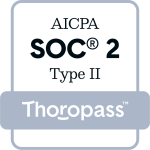No-shows cost thousands in revenue, reduce accessibility, and lower productivity — here’s how to stop them.
Patients have a lot on their plates. Doctors do too. Fitting necessary appointment time into everyone’s schedule is one of the most important challenges facing any healthcare provider. Scheduling tools and patient management suites are a good solution to managing appointments, but what happens when a patient never shows up?
$150 billion
$150 billion
Legacy IVR trees and live agent responses have served BPOs well for years, but in a world where ordering a taxi, booking a place to stay, or getting food delivered is as easy as tapping a button on our phones, these experiences feel slow and standardized. Critically, segments like business process services (BPS) are becoming key differentiators for modern outsourcers that have invested in emerging technology like Robotic Process Automation (RPA) and On-Demand customer service solutions. To stand out from the pack and attract new customers, BPOs must adopt and integrate these new, exciting technologies into their offering portfolio.
A Money Pit
(over $35,000 every month or more than $400,000 every year).
Most clinics aren’t lucky enough to have a no-show rate as low as 16%.This articlefrom SolutionReach lists the average no-show rates from some of the most healthcare specialties, gathered from multiple studies:
15%
25%
20%
18%
30%
30%
22%
Using our estimates, these clinics could be losing between $1,400 – $3,000 every day. To calculate how much revenue no-shows cost you every day, take the average number of patients you typically see in a day, multiply that by your average no-show rate, and then multiply that number by the average cost of an appointment.
Patients Have Pain Points
Nurses and physicians aren’t the only ones who know no-shows are a problem. AnAccenture reportfound that 77% of patients think the ability to book, change, or cancel appointments is important. Only a small number of appointments are self-booked by patients, however. The industry simply doesn’t give patients a good opportunity to help solve no-shows. Most of the time the process is cumbersome — involving an unwanted phone call to providers, where a receptionist may or may not be available to answer and change appointments. The process can take more time than patients are willing to invest, and sometimes is only available during business hours (when healthcare providers are working, but patients are also busy).
76 days
Other compounding factors add to the reasons appointments become no-shows. Healthcare is expensive. When patients can’t find the money to afford copays and worry about fees that might pop up during exams, they might not want to explain why they’re canceling an appointment.
Exams and doctors visits aren’t just expensive, they can be intimidating. Dermatological specialists see a high, 30% no-show rate as well. The potential for cancer diagnoses or the idea of someone closely examining potentially embarrassing skin issues could scare anyone away from an appointment.
There are always last minute conflicts as well. Life is messy, and events are often out of our control. When patients’ lives don’t go the way they expect, priorities get in the way of routine check-ups. When things are chaotic, patients need a system that’s faster and easier than phone calls and waiting on hold to properly cancel appointments.
Self-Service Tidal Wave
Self-service technology will dramatically change the healthcare industry over the next few years. By the end of 2019,Accenture researchpredicts “all of the top 100 US health systems and 55 percent of the remaining health systems will offer digital self-scheduling.” Automated self-service removes the potential manual, error-prone systems create for appointment slots to be left open accidentally. Making healthcare more affordable for those who need it will take more effort to fix than just implementing self-scheduling technology, but fast and convenient cancelling and rescheduling solutions can help nervous patients or those with last-minute complications let doctors know they will be missing appointments and give healthcare providers the time needed to make sure patients on waiting lists receive the care they need.
Working Together For A Solution
Notifying doctors of cancellations is still a cumbersome process for many patients. A wide variety of reasons (or a combination of multiple factors) can motivate patients to skip appointments without letting healthcare providers know. These missed appointments add up to a big hit to budgets and bottom lines. Even an industry leading no-show rate can result in thousands of dollars lost every month. Combined with the frustration no-shows can cause staff and the inability to reschedule those appointments to give other patients care, it’s easy to see why the no-show issue is a big problem in the healthcare industry.
When providers work with patients proactively, the no-show problem will begin to subside. Automated self-service solutions will help shrink the delay between referrals and appointment dates. Timely alerts from healthcare providers will help patients remember the appointments they have scheduled. Fast, on-demand scheduling tools will let patients book, cancel, and reschedule appointments on their own time, breaking down barriers to active scheduling and creating more revenue for providers. Zappix recently implemented a fully automated appointment reminder and rescheduling platform at a local clinic, dramatically reducing the rate of no-shows. The ZappixAppointment Confirmationsolution helps patients remember their appointments a few days in advance, and gives healthcare providers the time and knowledge necessary to reschedule open slots when needed. As technology advances and the healthcare industry digitizes, the barriers to no more no-shows will begin to fall.






